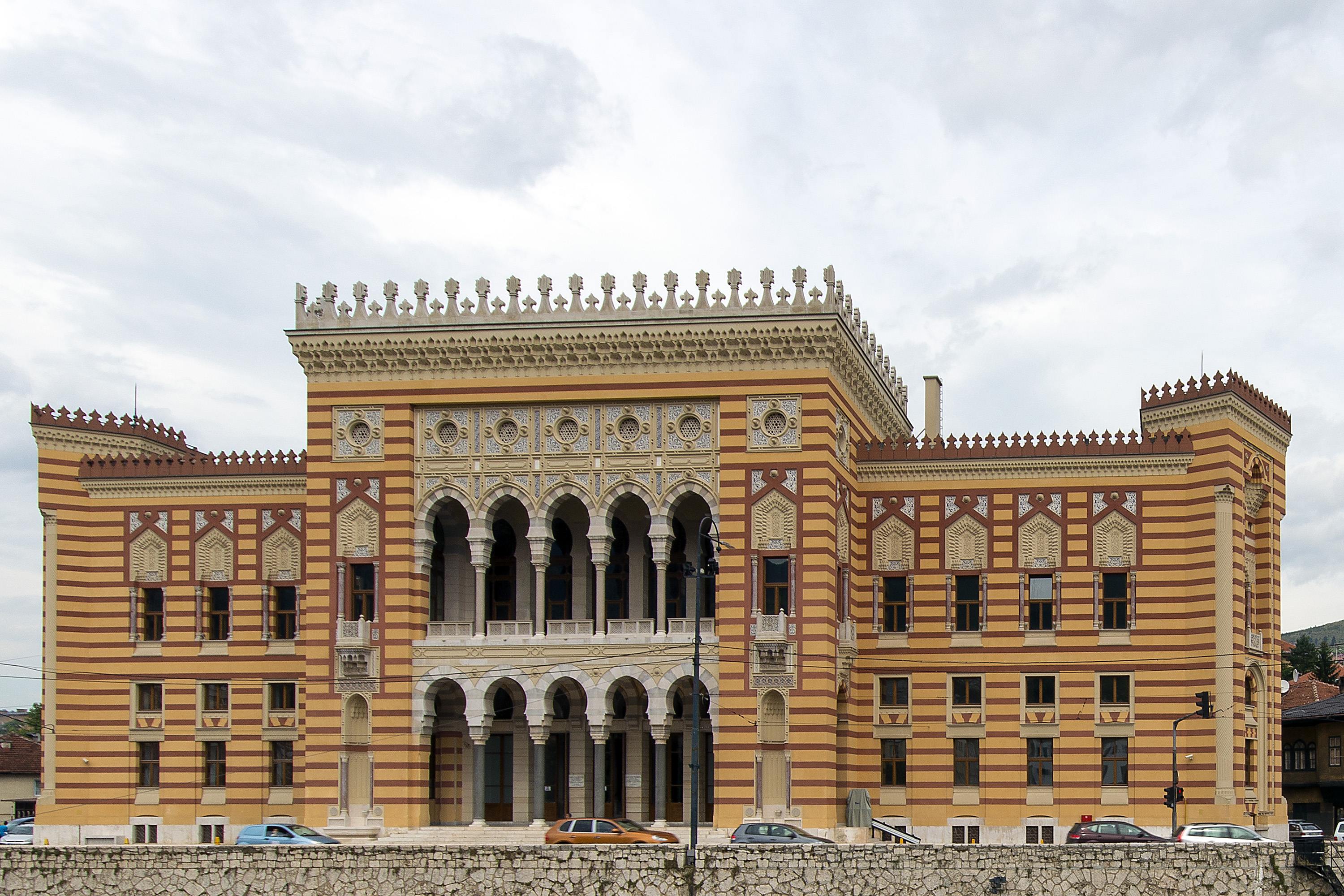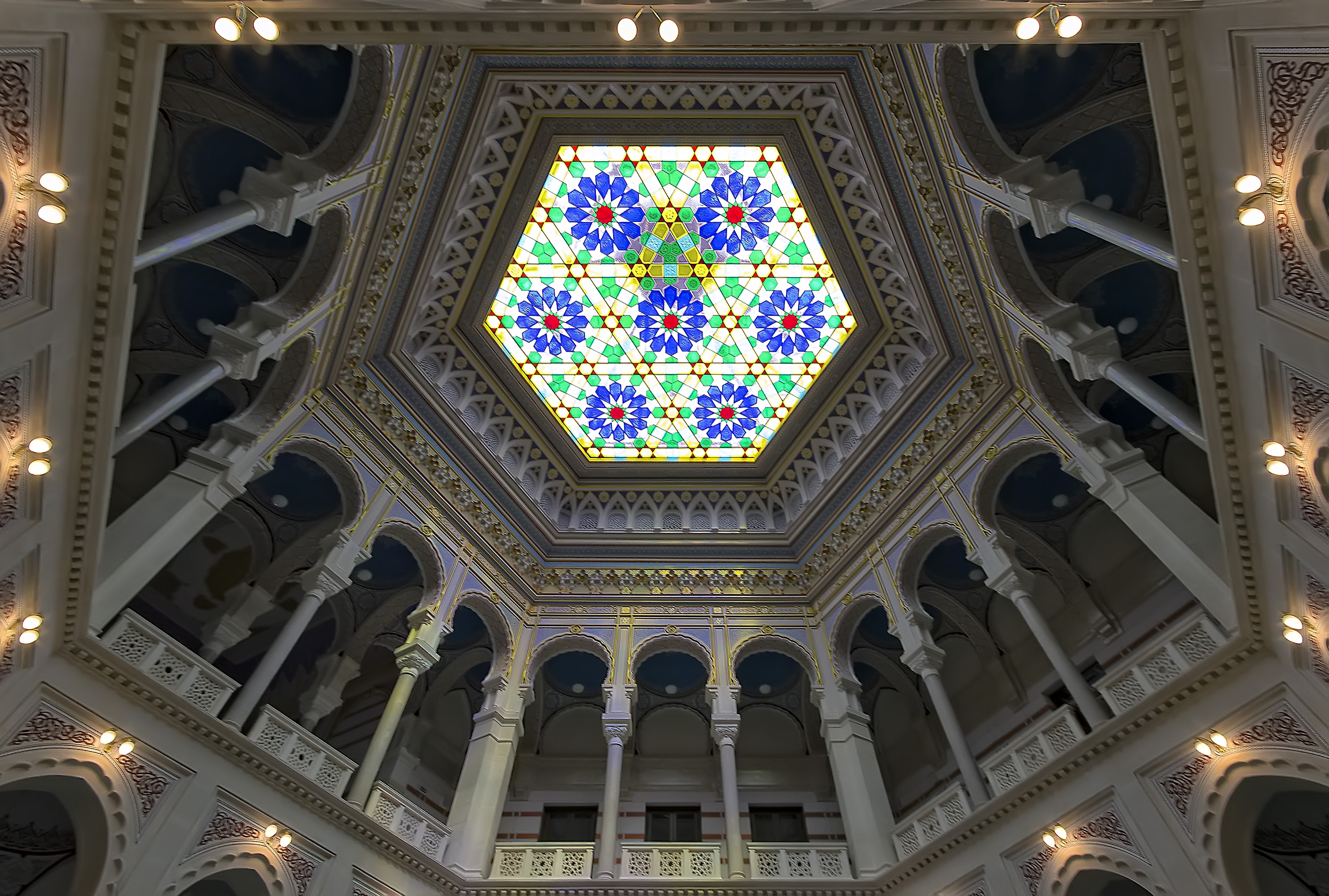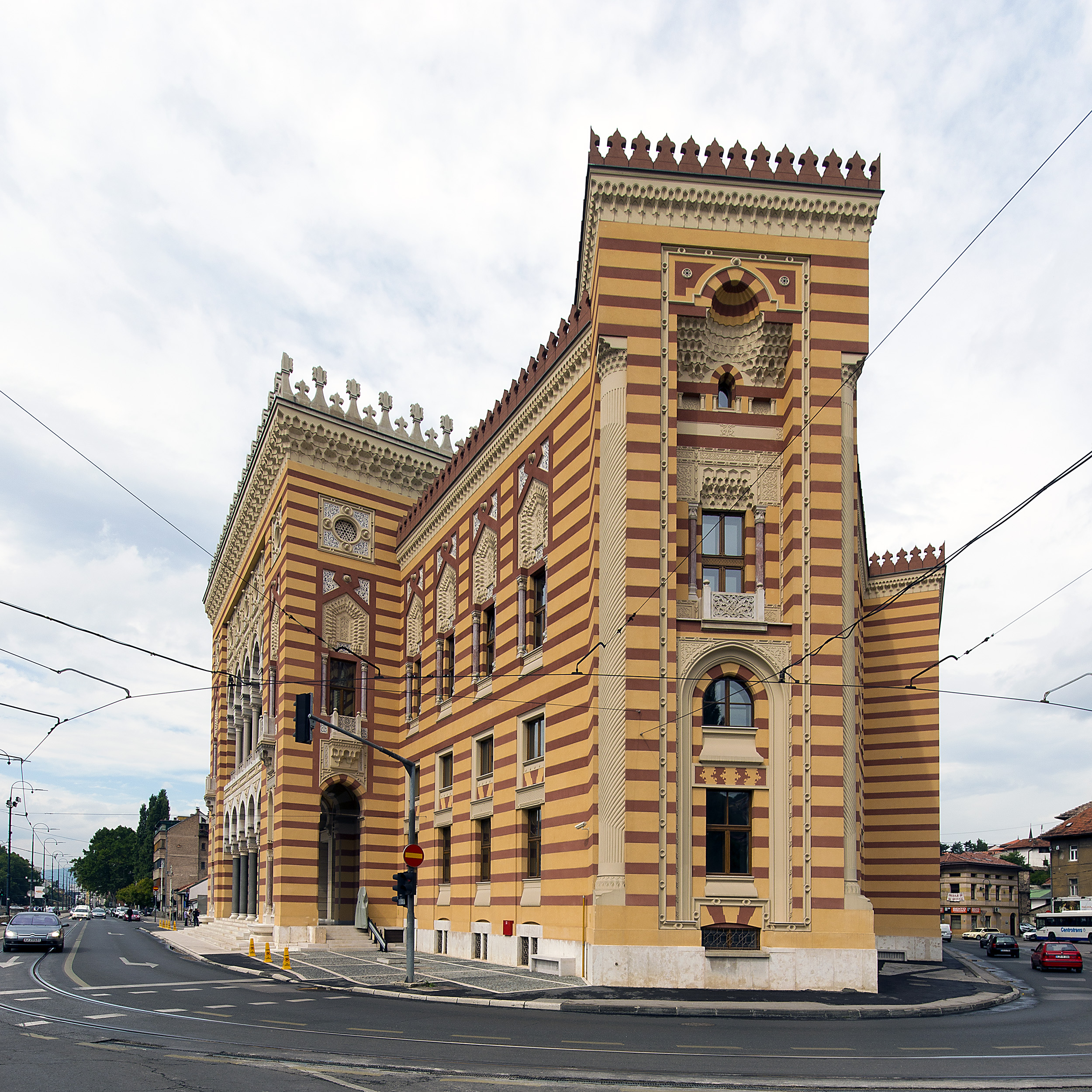Perhaps, it doesn’t belong there. It is not part of Carsija, it is too big. It is not part of a forest, it is too snowy. It is not part of anything but nonetheless, its place is just there, you cannot imagine anything taller nor shorter, nor less yellow than it.

Written: Vedran Jakupovic
Photos: Samir Zahirovic
It takes time to come down the Miljacka canyon. It seems as if the forest is endless and one loses his sense at what height he has been. You get the feeling back once you go down again, if God lets you. At the end of the forest, on the Top Bosnian field stretches it. Yellow, with orange shades. Tawdry, trimmed with lace and a lily crown at the top. Its colour is neither lemon, yellow nor ochre; this colour keeps in itself the colour of a desert sand and bazaar gold. Both modesty and luxury. It stands as a welcome. Mevlevi Tekke used to be the welcome, which was devastated by the ones, and the others restored it on a rock above the old site, so now, it can only watch but it cannot welcome.

The yellow house perhaps does not belong there, it is too big. It is not part of a forest, it is too snowy. It is not part of anything but nonetheless, its place is simply there, you cannot imagine anything taller nor shorter, nor less yellow than it. Perhaps, to show that even a German warrior doesn’t know everything. That he doesn’t know that these Muslims in Bosnia are not similar to those in Spain, those who like to dude and trim buildings with lace. These in Bosnia surely know to love such a building. And accept it as if it were theirs.
As for everything else in Sarajevo, Vijecnica also looks differently from Bistik side and from the other. On the cold side, the Sun watches and illuminates it. It is open, splendid, wide, it calls, appeals. When you watch from Vratnik, you watch from the side and see it shy and coy. As if it feels sorry for obstructing the view of Carsija to Nadmlins. She won’t even look them in eyes. The other side looks at Bravadziluk all the way to the Bey’s Mosque. Smoke from the street with grills, obstructs its view on the most beautiful Sarajevo yard- harem of the Mosque. The smell of roasted meat instead of fragrant harem’ roses come to the trimmed white lace. And as if the smoke says- since you won’t let Nadmlins to watch, I won’t let you either. And as if it thought –if only I could, I would drive you away same as you drove away the Inat house on the other side. But, if it were on the other side, it couldn’t have opened to the sun. He knows that too. But it still smokes. It doesn’t stop.

I used to walk, when I was a student, in the Old Town. The adults would say ‘to take a breath’ after all day studying. I made tours along both known and unknown neighbourhoods and streets whereas each of them in the afternoon hid its own secret. From wherever I took a look on Sarajevo, Vijecnica loomed. This Vijecnica of my time, burnt, devastated, sad, hid in itself a secret. I managed to find out secrets from neighbourhoods myself but the secret of Vijecnica, I simply couldn’t have. Perhaps, I will succeed one day. If I go in it, along the hallway, steps, look out from it and not only at it. Perhaps, it hides a secret why it stands there or how many letters it saved, read. How many diploma papers it endured? How many wise and unwise decisions were talked about there? Perhaps, it will reveal the secret and the secret of destinies and mourns from the neighbouring Beledija that she had listened to for years. Or the secret of big loves that arose in its premises.
And I am sure she knows the reason why it bothered those who had burn it that summer. It knows, but it won’t tell. A lady.
Vijecnica was built in 1896. At first, it had been the seat of the Local government and Local administration of Sarajevo. In the period after The Second World War, until 1949. Vijecnica served for the City Council as the seat of District Court Of Sarajevo and the seat of Bosnian and Herzegovinian Parliament. Later, it became the City library which was the National and University library of Bosnia and Herzegovina.
During the Sarajevo siege, in the night between 25th and 26th August 1992, Vijecnica had been shelled and burnt. Besides thousands of books and important documents, which were burnt in the flames, a huge part of Vijecnica was burnt as well- its auditorium, joinery, walls, roof structure and a large part of a façade.
Restoration of Vijecnica began in 1996, on the centenary of its construction. Completely reconstructed, it was ceremoniously reopened on the 9th May 2014, on Europe Day and Day of Victory over Fascism.